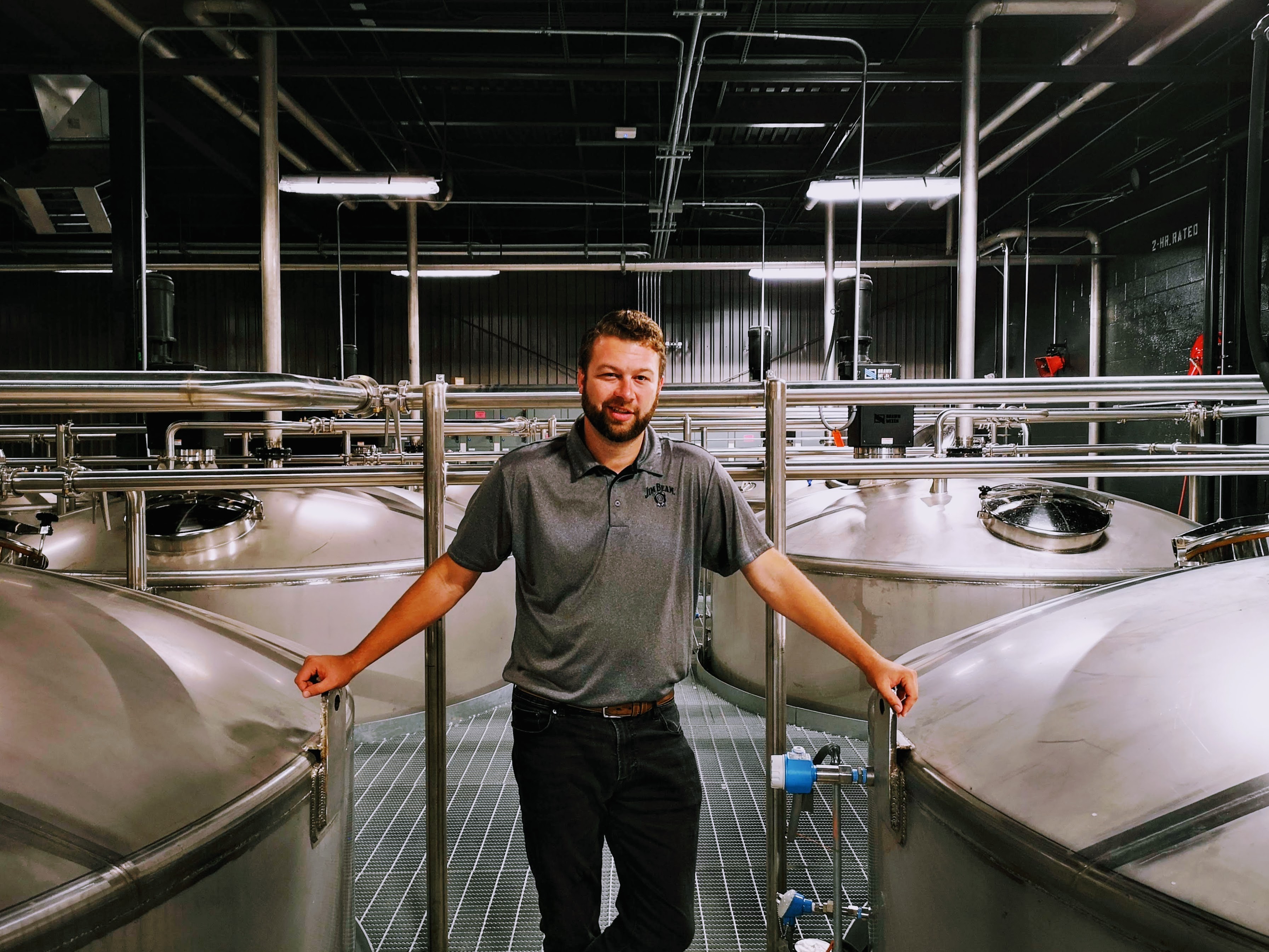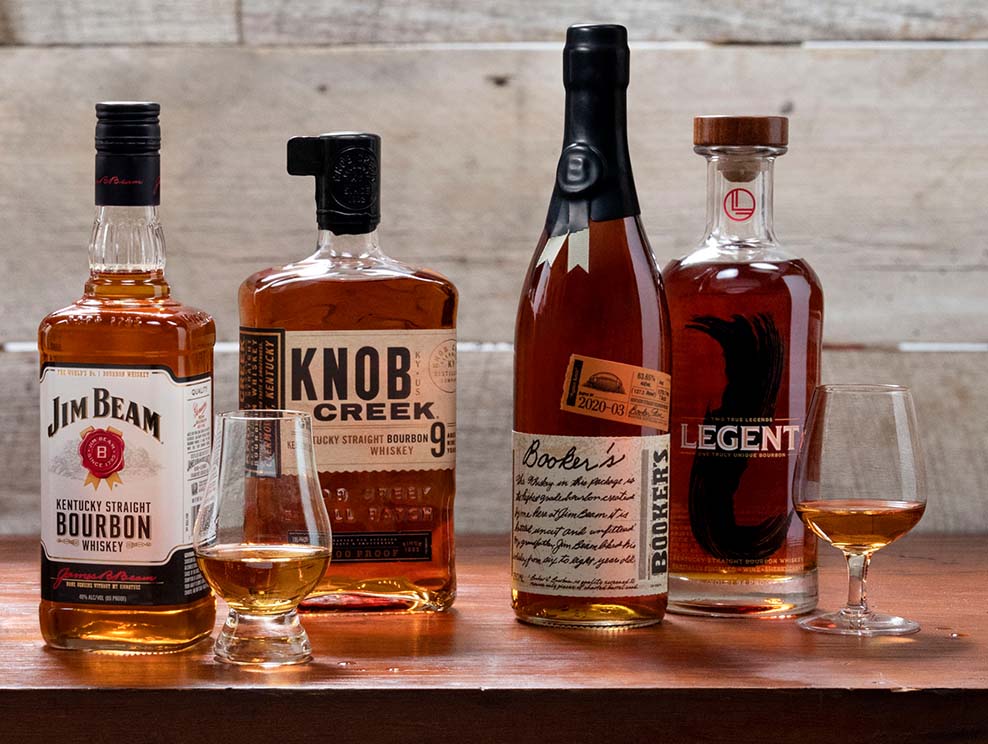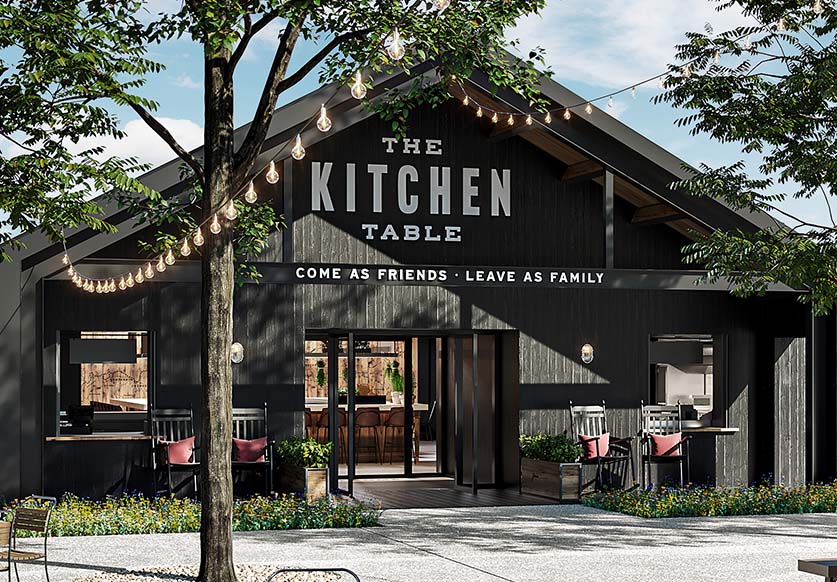
Distiller Freddie Noe knows that you probably have preconceived notions in your head about Jim Beam. As the eighth-generation distiller at the best-selling bourbon brand in the world, he knows that’s unavoidable. So he decided to lean into his family history and bourbon heritage, while also making serious craft-driven adjustments to the distilling process sure to completely alter everything you think you know about Beam and their brands.
The biggest example of Noe’s approach is the brand-new Fred B. Noe Distillery (named after Freddie’s dad and Beam’s current Master Distiller), which is a true small-time craft distillery right in Clermont (KY) and surrounded by the freshly refurbished and re-opened James B. Beam Distillery with a new visitor’s center, tours, tasting rooms, and restaurant (don’t sleep on the Hot Brown pizza, trust us). The new distillery was Freddie Noe’s brainchild, based on his Little Book creations. We’ll get into how that played out below, but the curious can go and visit this craft distillery, drink some great cocktails, and even practice their own blending skills, right on the larger Beam campus. The Fred B. Noe Distillery has also teamed up with the University of Kentucky’s James B. Beam Institute for Kentucky Spirits to bring classrooms right into the distillery to educate the next generation of whiskey makers.
To illuminate Jim Beam‘s new era, I sat down with Freddie Noe in his distillery to talk about how Little Book came to be and then helped build the space itself. We also touched on what it’s like taking on the mantle of “Beam” as a brand reaching back to 1795 and how new whiskey expressions are built. Let’s dive in!

You know, ten, 20, 30 years ago people would know the name Jim Beam but not know much about it other than it’s Kentucky bourbon. Today, we know how big the brand is, how it’s made, etc. Jim Beam is the number one selling bourbon in the world. Does that give you a focus of like, “Hell yeah, let’s keep going,” or do you feel like it puts a spotlight on you for people to nitpick you more because you’re in that spot?
I think it’s a little bit of a both. The thing about me, when you say, “World’s number one bourbon,” I’m so proud of that fact. Jim Beam’s been the world’s number one bourbon since the ’70s. But what I’m striving for … I want to see Jim Beam be the world’s number one whiskey. That’s kind of one of my goals.
Watch out, Johnnie Walker.
Exactly. It’s a lofty goal, but through things like Booker’s, Baker’s, the things we’re going to be doing in this facility, hopefully, it amplifies what bourbon is about, drives more education on Jim Beam, and bourbon in the overall whiskey category.
I get a lot of silly questions. One of the biggest misconceptions is that Booker’s and Baker’s or the Little Book is all just Jim Beam in a fancy bottle. But those bottles are built around craft and what we’re doing is craft and that craft isn’t a science. It’s great and I love it.
It sort of blows my mind that I can be in Berlin and I can walk into a shop and get a bottle of Jim Beam for 9.99, about 12, 13 bucks and it’s identical quality and exactly what I want. The fact that I can get that quality of straight bourbon from right here in Clermont for that price…
It’s crazy.
… It’s kind of a miracle.
One of my favorite ads for Jim Beam is from when he was out kind of traveling and just getting this thing going was, “Beam Whiskey, no finer in all this world, yet moderately priced.”
That was the point. He knew he had good whiskey and he knew he was making money off of it. He didn’t need to make a million dollars off of everybody, right? He wanted to get our whiskey in everyone’s mouth because he thought it was the world’s finest whiskey.
I think that’s what you and the Russells [the family behind Wild Turkey] understand is, “Hey, let’s keep this accessible so that everyone can buy it.” Then, of course, that’ll lead people to the Booker’s, Little Book, etc.
Absolutely. You have to have that because I want to find an American whiskey for everyone in the world. I think there is the possibility of that. We have the most levers to pull. It’s holding those levers in, delivering products like Booker’s or even like Booker’s Rye that kind of elevates things, but you never lose sight of that Jim Beam. That was one of the last things that my granddaddy said to my dad is, “Take care of my Booker’s, but don’t ever lose sight of Jim Beam because that’s what got us here.”
And when I was a kid I was like, “But my granddaddy’s got a product named after him. Why does he care about that?” Now, I know. If they call me and there’s a Jim Beam quality problem. I’m probably more up their ass than if they said, “We got a problem with Little Book.” Because I know I can correct that. That’s mine, right? I can deal with those problems. But if you are in Berlin and buy a bottle of Jim Beam and it’s at all off from that quality mark, we may have lost you as a consumer.
Guess what’s sitting right next to Jim Beam on the shelf?
Exactly. There’s something else sitting right there now. There’s so much sitting there. We have to be the biggest upholders of integrity.

Building off of that. There’s always going to be something different these days. Somebody’s always going to be coming along with new ideas and making new expressions, which sort of leads me to this new craft facility because I feel like this is a new idea that you don’t see in a lot of distilleries this size. What was the “aha” moment where you knew this was the step forward for Beam?
When I first started working on Little Book, I didn’t know anything. I was just doing some blending. It wasn’t even called Little Book yet. It was just “Freddie working on this idea he had.”
Right.
Right around that same time, it became “Little Book” because someone was reading my granddad’s book where he called me “Little Book” as a child. And they’re like, “Look, your granddad’s got Booker’s. How cool would it be to name it Little Book?” And I hadn’t even thought of that, but that’s perfect.
So, as I was working on that, I got to a place where I had a couple of blends I really liked. And no one really knew what I was doing except for one other fellow and my dad and a couple of marketing people who said, “Go for it.”
So I’ve done this, we got this place and I’m like, “This is pretty fucking good.” So I take it to a couple of people to taste it and they’re just, “Wow, this is good stuff. What is this?” I said, “It’s a blend.” Silence.
“A Blend?”
One of them actually called my dad up. “What the fuck is Freddie doing doing blends? Are you sure we want this kind of publicity coming?” And Dad was kind of like, “Let him do his thing and we’ll see what happens.”
As if Four Rose’s didn’t already exist.
Exactly! So a few months go forward, we’re about to launch Little Book, and our CEO, Matthew Shatter, comes down for my grandmother’s wake. I hadn’t seen him in a while but he was my mentor. He come down and after the service, he come to the house, and then we had a drink. He’s like, “What are you working on these days?” So I slid him that glass of Little Book and he was like, “What do we need to do to get more of this?”
And I said, “I need a distillery.” He’s like, “You got two distilleries, right?” I said, “We need a small distillery because these are very differentiated products that I blended together very delicately and patiently.”
To get to this kind of stuff, you can’t just take your everyday whiskey. You need to go and stretch the boundaries of what the flavor is to get into the different areas I was looking for.

Where did you start finding these whiskeys, to begin with?
It’s kind of funny. It started when I was working in the distillery, just learning about corn, rye, and malt and the flavor that each of them individually attributes to our mash during fermentation and then to the distillation. I always thought we should put all these together from each part. Each of them has its own flavor individually. Could you maximize what flavor is available and then blend them together?
Or, I didn’t say blend because back then it was a dirty word. If I said “blend,” dad or grandad would’ve beat me with a stick. That was a terrible word.
It was “mingling,” right?
It’s “mingling,” exactly.
But I thought if you put them together after you made the whiskey, what’s that like versus cooking it together? And the distillery guys are all, “This guy will never fucking make it around here. He’s going to separate how we cook all of this?!?”
I did a little bit of a stint where I went to quite a few different departments and spent three to six months there. I got invited to go to R&D and they tasked me with coming up with a new product. So I just asked the lady I was working with, “I want to do a blend of corn, rye, and malt whiskeys. Do we have that?” And she’s like, “I think we do.”
And that’s where Little Book started. What I used was corn whiskey that was existing stock, a rye whiskey which was our normal rye that had lower content rye right above the 51 percent. So it still had quite a bit of corn in it. And they were four years old. There were still a lot of immaturities that those liquids were bringing about. It wasn’t that good, but I did it as an exercise.
Then a couple of years later, it comes back up as an opportunity to work on innovation. I thought, “I did this and did it at 80 proof and four years old,” Then I thought, “What can I do differently?”
So some of it was a different age, maybe utilize more of that kind of rye, like Booker’s rye. Could we utilize some of that? So that’s essentially what I did was assemble a high rye content older whiskey with that corn whiskey with some older malt whiskey. The corn whiskey was actually 13 years old and that’s where it all started to really come together. But it all stemmed from a thought of, ‘if we cook these together and it comes out like this, what would happen if you cooked them individually, distilled them individually, and then mingle them together?’
Right.
I always want to know the what if? What if we did it this…? If we do it this way and it does this, but what if we do this, what happens?
It doesn’t always work out the best in the distillery because you lock things up and you have to shut things down to do something different. That’s why I was telling the CEO that we need a place where I can essentially lock it up and no one’s going to be calling me saying, “Gosh damn, we missed 400 barrels of whiskey yesterday because you shut the distillery down for 14 hours.” You know what I mean?
It gives you time to think.
This place gives me that opportunity to do that and it literally all stemmed from that Little Book conversation about how we can extend further into whiskey and the differentiation that we can do.
Then there’s the added layer to this spot in that it’s an experiential location for people to come and watch you, watch the experience, and watch this literal craft whiskey get made live while drinking a killer cocktail.
Correct.

What are some of the things that you’re looking forward to people actually experiencing when they come here?
I think the biggest thing, it’s a quote from what we’ve been saying, “Genuine in the making.” Everything we do here is genuine. I pointed out when we were walking around, we run natural fermentation so we don’t use synthetic enzymes. We propagate our yeast here on site. It’s in the room in the corner over there, right under my watchful eye. A lot of people have outsourced those things. They get them in bags.
But to me, I think it makes you a better distiller when you have to watch everything, you have to make sure your assets stay in touch, or you got to cut out your setback. So there are things that we do here that are purposefully inefficient because it’s all about the quality that goes in the bottle. It’s not about making more whiskey. It’s not about selling thousand-dollar bottles of whiskey. It’s about always making sure the quality hits.
That’s what it’s about is that people come here and they get to experience that genuine in the making, that we’re still doing this. I say this and I think some people in our company maybe get a little nervous when I say it but “It’s the Beam way and it’s the right way,” because we’ve been doing it for a long time.
There have been opportunities to maybe grab synthetic enzymes or to take our yeast and let it be outsourced so we just come in perfect every time. But we own this process. My family’s owned this process for 226 years now. And my dad said it and I say it too, “I’m not going to be the guy that’s going to change that authentic process or alter that.”
If anything, you lean in.
Exactly. I’m going to lean into it. I’m going to help us maybe make it a little bit less inefficient if we can, but we’re still going to do things the Beam way and so that’s what I hope people experience.
When you come here and you take away the Beam way, when you see the products we create and the liquids that are here, hopefully, it rises that word “craft” as what’s genuine in making. You see we’re doing craft and not science. I think if you come here and you see this stuff, it’d be hard for you not to be very inspired. You’ll see that the world’s number one bourbon maker is still doing things so inefficiently for craft, right?
For sure, I think a lot of people see Jim Beam as so big that It must be a huge, faceless factory. And that’s the opposite of what we’re sitting in right now, which is pure character, but also pure craft. I mean, this is really the antithesis of what people probably have been programmed to think about Beam.
Correct. If we were to walk around the facility just on that side of the building, or if I took you through the bottling house, or around the warehouse team, or when we walk through that door, I’ll be a little bit nervous about the shit they might give me because we’re all very close.
That’s good though.
Right? Because they’d be excited to see me and they’d be excited for you to be here. That’s what’s cool is our people interact with people like they’re in church. It’s not because we’re telling them, “You got to talk to these people.” They’re proud of what they do here and they want to showcase it to anybody and everybody who will come through.
So luckily, since we’re opening back up. we’ll hopefully have more people coming in, getting a chance to see it. They’ll see that everybody here is an extension of me and the Beam and Noe family. And that they’re proud of this place and proud to showcase what we’re doing here.

